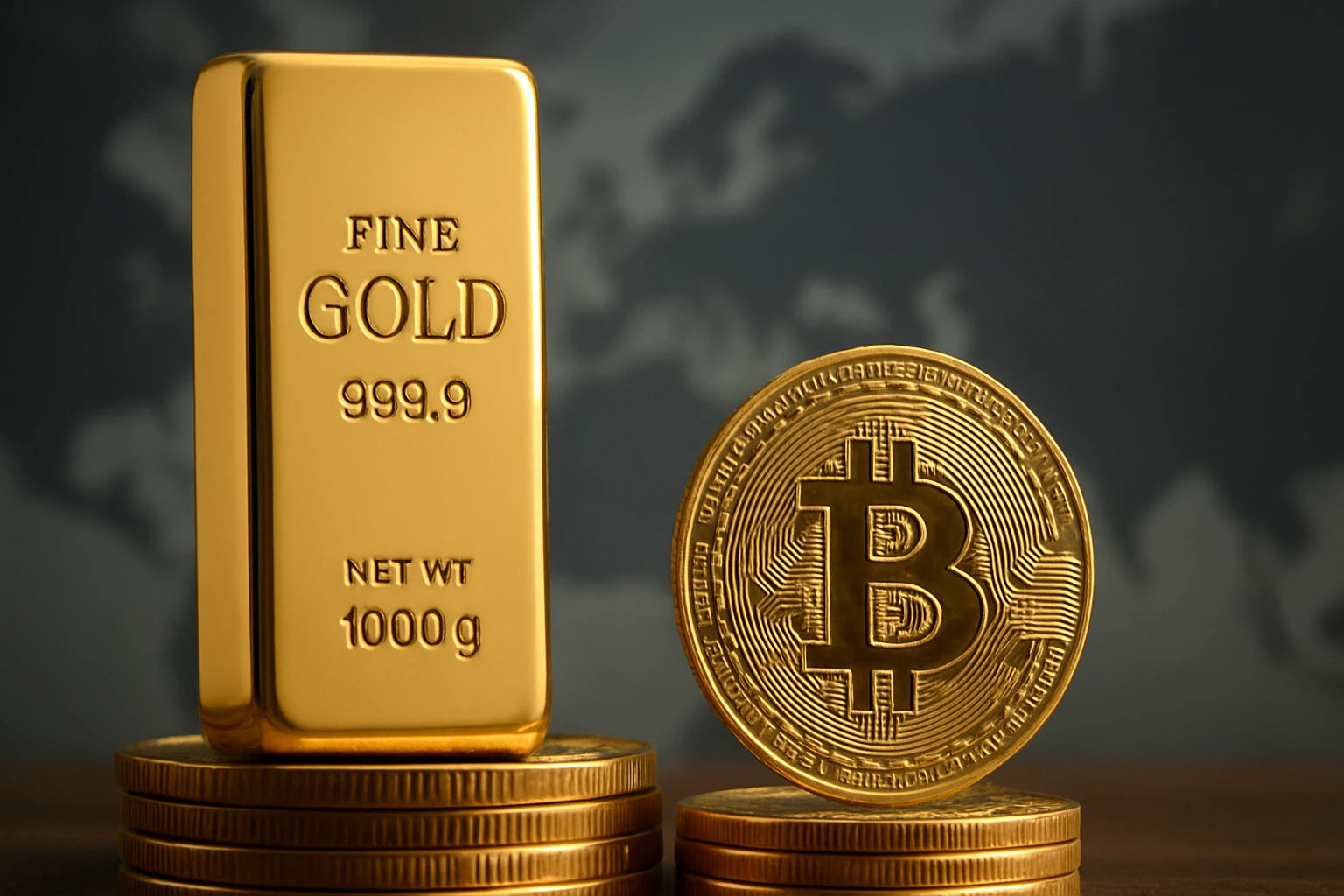NEW YORK — As Wall Street’s fascination with blockchain technology deepens, gold one of the world’s oldest stores of value is finding a new digital home.
The recent surge in gold prices has fueled growing interest in tokenized gold, a blockchain based asset designed to mirror the value of the precious metal while offering the flexibility and speed of cryptocurrency transactions.
The push toward tokenization converting real world assets into digital tokens is being touted as a transformative force in global markets.
Analysts believe gold tokenization could become a major gateway for traditional investors seeking inflation hedges without leaving the digital ecosystem.
Gold’s rally to record highs this year has underscored its enduring appeal amid global economic uncertainty, rising inflation, and a weakening US dollar. But in 2025, a new narrative has emerged: gold on the blockchain.
Tokenized gold represents physical bullion held in secure vaults but issued as digital tokens that can be traded, transferred, or even used as collateral.
The model mirrors the structure of stablecoins digital currencies pegged to fiat money or other assets yet offers the tangibility of a centuries old commodity.
Stablecoin issuer Tether reported a 60% increase in the market capitalization of its gold backed token, XAUT, in the third quarter, jumping from $1.44 billion to nearly $2.1 billion before a minor gold sell off.
PAX Gold (PAXG), issued by Paxos Trust, trails closely behind, bringing the combined market size of tokenized gold to roughly $3 billion. Although that figure accounts for only about 1% of the broader real world asset tokenization market, industry leaders see it as an early signal of long term potential.
“Tokenized gold gives investors a digital bridge between traditional commodities and decentralized finance,” said Will Peck, head of digital assets at WisdomTree.
“It allows investors to hold gold in a digital wallet, trade it around the clock, and move it peer to peer without the limitations of conventional systems.”
Experts note that the appeal extends beyond convenience. In an era of persistent inflation and concerns about fiscal stability, tokenized gold allows investors to retain exposure to a stable asset while leveraging blockchain’s transparency and liquidity.
“You have a continued debasement of the US dollar,” said Ian Kane, CEO of fintech firm Firepan. “Being able to take gold, borrow against it, and earn yield without worrying about your principal losing value that’s compelling for institutional and retail investors alike.”
According to Peck, tokenized gold could evolve into a digital complement to bitcoin, serving as a hedge against inflation and systemic risk.
“Both gold and bitcoin have done well in a world of rampant money printing,” he said. “They serve different but complementary roles as deflationary assets.”
While the tokenized gold market remains modest compared with the $300 billion capitalization of US dollar backed stablecoins, it is expanding faster than many expected.
A report from the Global Blockchain Council projected that real world asset tokenization could reach $10 trillion by 2030, with commodities like gold, silver, and oil representing a key segment.
“Gold is a natural fit for tokenization,” said blockchain analyst Mariah Liu of MarketVector Research. “It’s fungible, highly liquid, and universally valued.
The challenge will be ensuring the integrity of custody and the credibility of issuers.” Compared to bitcoin, which can experience sharp volatility swings, tokenized gold has shown remarkable stability.
Data from crypto analytics firm Kaiko indicates that XAUT and PAXG trade within a 0.2% range of the spot gold price on most exchanges, reinforcing their reliability as proxies for physical gold.
For individual investors, tokenized gold offers new accessibility to an age old asset. “I’ve always wanted to invest in gold, but storage and verification were barriers,” said New Jersey based investor Samir Rahman, who began holding tokenized gold earlier this year.
“Now I can own it digitally and still have confidence it’s backed by real bullion.” Vault operators and custodial firms, meanwhile, are adapting to meet rising demand. London based BullionSafe recently announced plans to integrate blockchain verification for its gold reserves.
“Clients want both transparency and liquidity,” said BullionSafe managing director Laura Jenkins. “Tokenization allows us to offer real time verification while giving investors the freedom to move their holdings digitally.”
Financial institutions are watching the trend closely. Several asset managers, including Fidelity and BlackRock, have publicly acknowledged exploring the tokenization of commodities as part of broader efforts to digitize investment infrastructure.
Analysts predict that as regulation evolves and institutional adoption grows, tokenized gold could shift from a niche innovation to a mainstream asset class.
“Tokenization is more than a technological shift it’s a structural transformation in how assets are owned and transferred,” said Liu. “Gold just happens to be the perfect testing ground because of its universal trust and liquidity.”
Still, challenges remain. Questions about regulation, taxation, and interoperability between blockchain platforms must be resolved before tokenized assets reach full maturity.
Additionally, ensuring that every token remains backed by verifiable reserves will be critical for investor confidence. The rise of tokenized gold marks a convergence of old world stability and new age innovation.
While still a fraction of global gold holdings, the digital evolution of the metal underscores a broader transformation in financial markets.
As central banks, fintech firms, and investors navigate a landscape reshaped by inflation, technology, and shifting trust in fiat currencies, tokenized gold stands at the crossroads of tradition and disruption gleaming both in vaults and on the blockchain.

